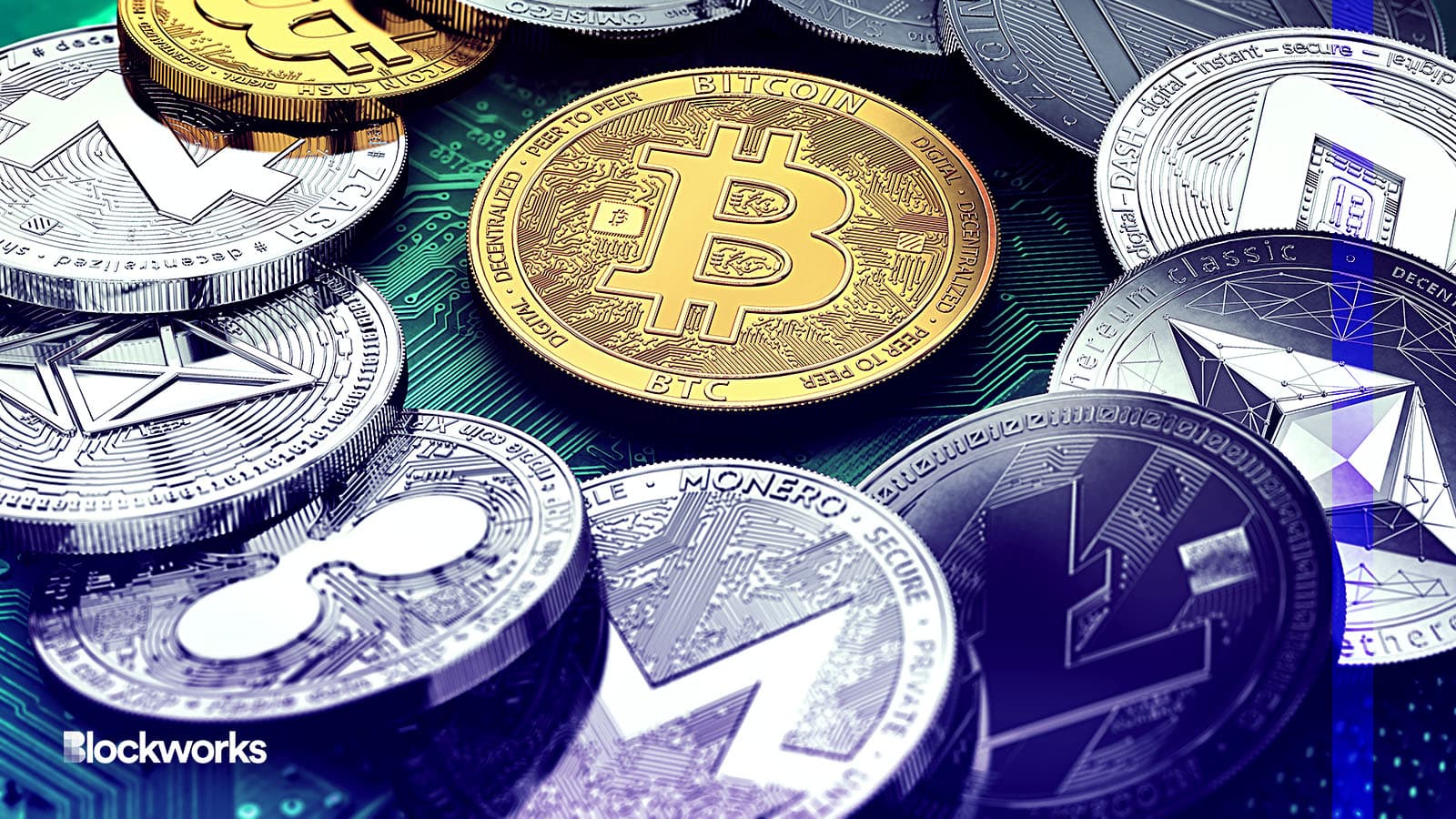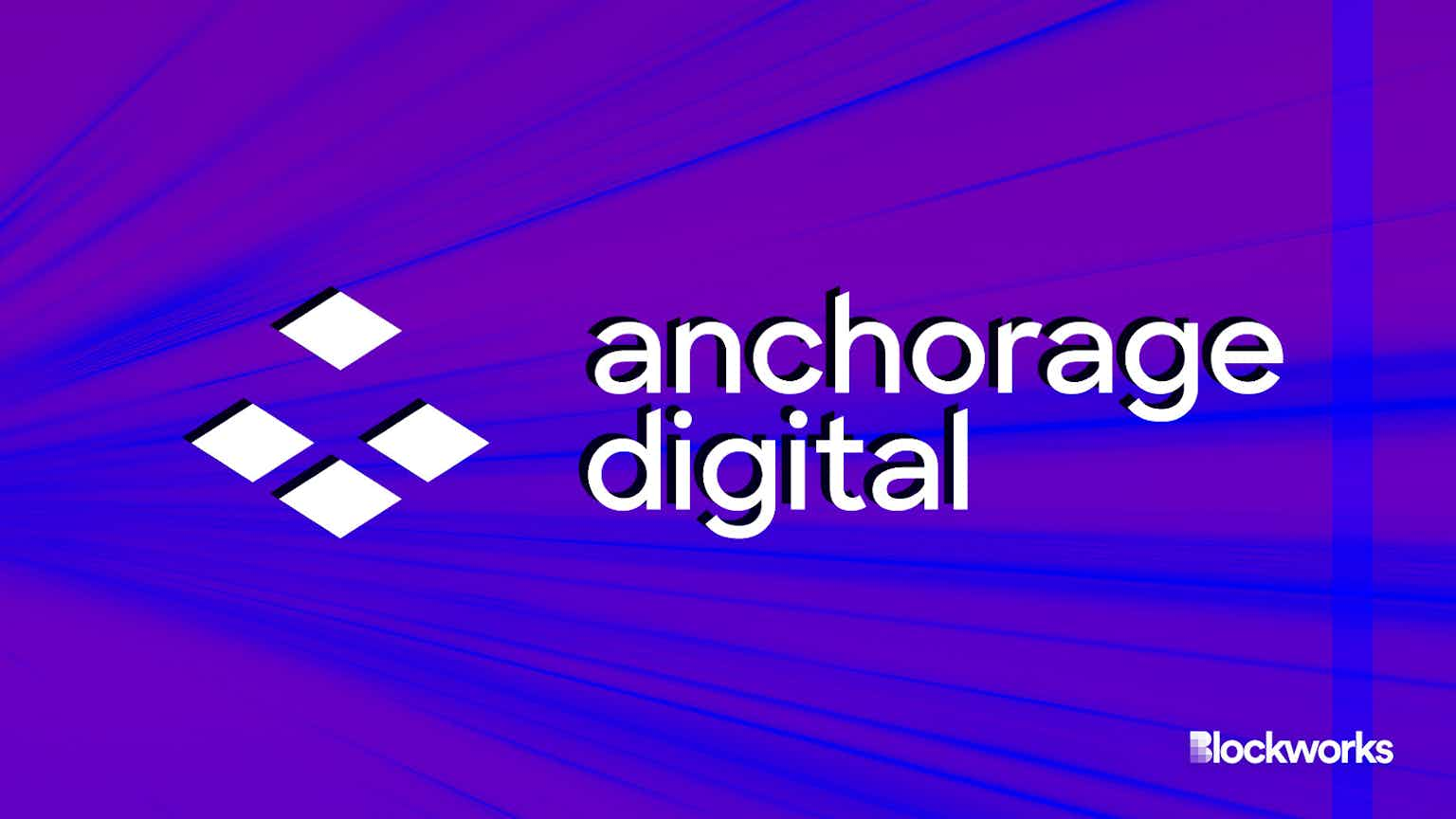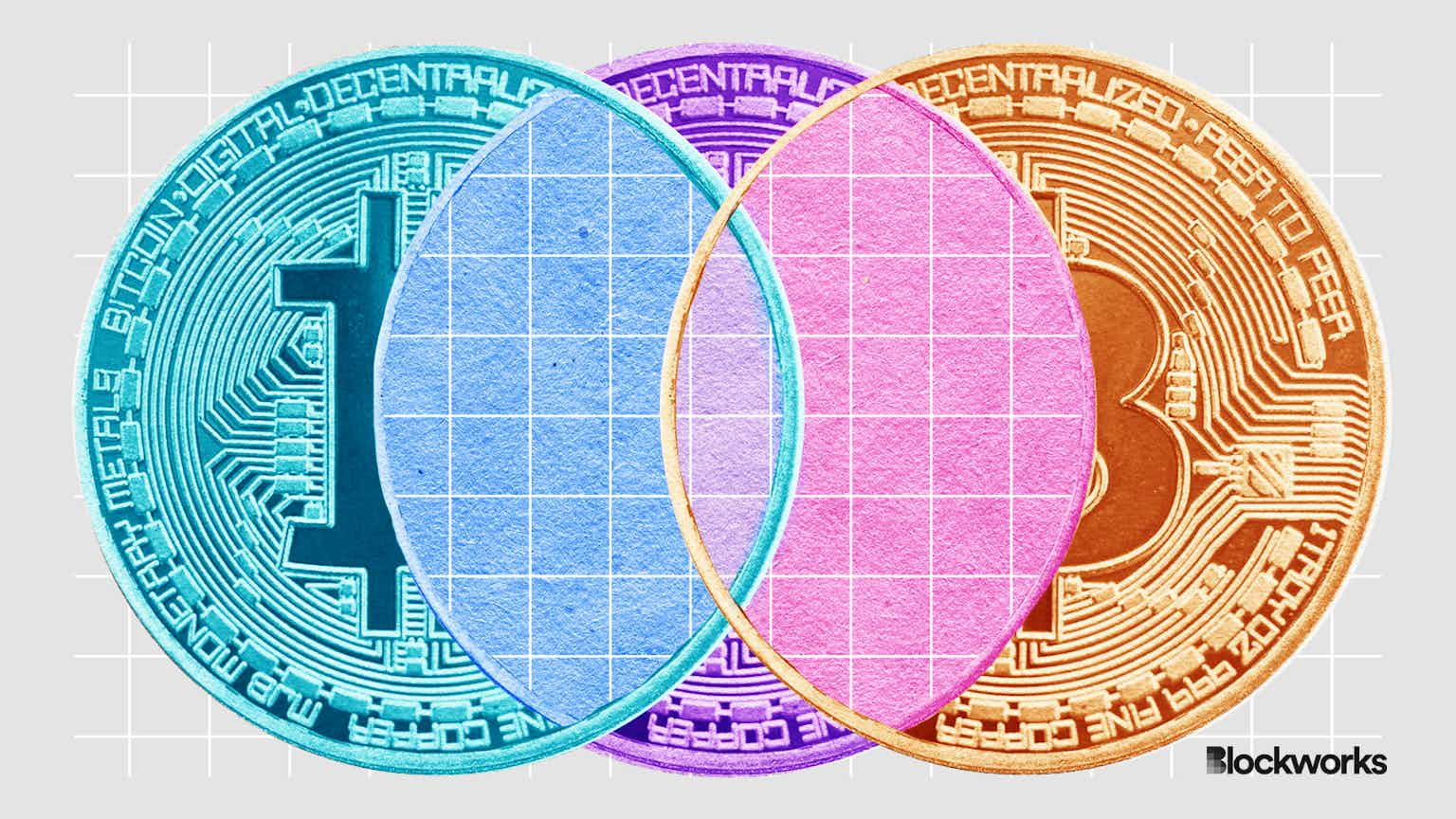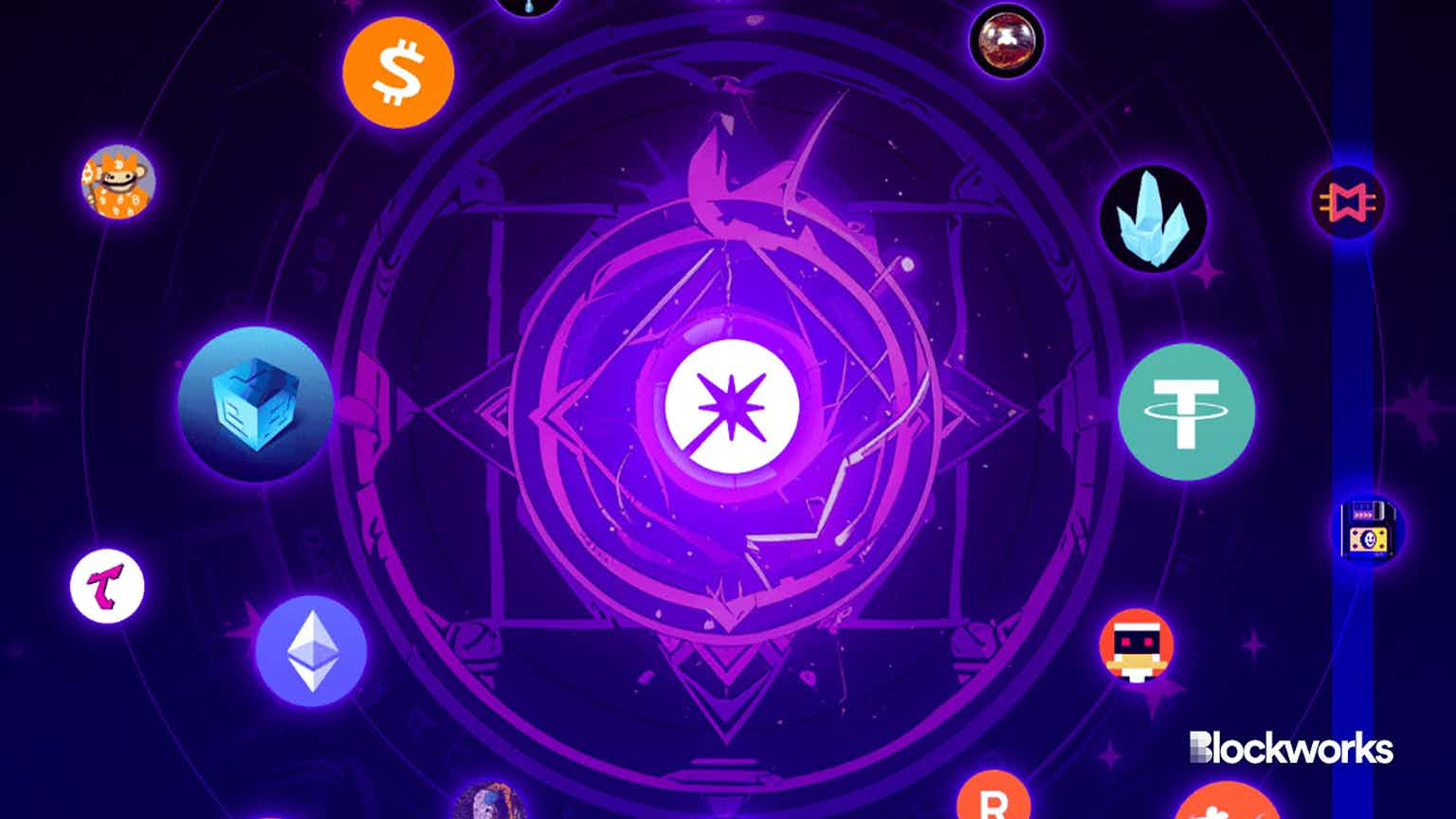Where’s the Non-Bitcoin Market Headed Over Coming Months?
Smaller cryptoassets largely act as high-beta alternatives to ether and their prices have been positively correlated with ETH performance in recent weeks

Source: Shutterstock / Wit Olszewski, modified by Blockworks
They say a rising tide lifts all boats.
That certainly rings true for the altcoin market over the last 30 days, courtesy of strong momentum from leading majors like bitcoin and ether.
Ether’s dominance has inched up ever-so-slightly over 30 days to 17.8% while crypto assets such as solana, dogecoin, XRP and cardano have seen a small decline of less than 1%.
Total market capitalization is now up 33% from $839 billion to $1.1 trillion since the new year, while the total value locked (TVL) in DeFi has jumped 30% from $50 billion to $65 billion, DeFiLlama data show.
Of the top 50 altcoins with a market value above $200 million that Blockworks analyzed, aptos, whose reported market cap tops $2.7 billion, remains the sector’s largest gainer this year.
Up more than 350% over 30 days, the protocol previously dubbed as an “Ethereum Killer” has roughly 50-60 active developers — similar to non-Ethereum smart contract platforms such as Cosmos, but with far less established dapps and a TVL of $61.3 million.
Skepticism from analysts centers around the true value of its circulating supply and eye-popping fully-diluted valuation just north of $17 billion — which puts it as the sixth most valuable cryptoasset (excluding stablecoins) on an FDV basis.
For the token to justify its market value, a few things need to happen: grow its user base and liquidity, according to a spokesperson at Asia-based crypto services firm First Digital.
“Aptos investor unlocks are not set to begin until [October] this year, I believe, and the extreme negative positioning precipitated a massive short-squeeze. This pushed the price up quickly,” they said.
Still, many other altcoins with a market cap above $200 million have experienced considerable growth year-to-date. Layer-1 protocol Fantom’s native token FTM, for instance, has almost quadrupled in value — up 180% YTD, while DeFi protocol Injective (INJ) closely follows suit at 174%.
And let’s not forget Ethereum rollups Optimism and Arbitrum whose transactions now exceed that of the Ethereum mainnet alongside both platforms witnessing an uptick in daily active users.
Ether is “world’s best-performing asset”
But what’s driving the value of the altcoin market, and where are traders expecting prices to go next?
The rally in digital assets has been “broad-based,” with several altcoins — which were oversold in the December bloodbath of liquidations and year-end selling — having bounced back, BitOoda told Blockworks in an email.
When looking at the major bellwether crypto assets, ether is up 34% YTD to bitcoin’s 40% rise.
“This is counterintuitive, as ether has historically acted more as an altcoin and outperformed bitcoin during rallies,” a BitOoda spokesperson said. “One explanation for ETH’s underperformance could be the potential upcoming sell pressure overhang from staking withdrawal unlocks.”
That may be true this year, but when looking over a larger timeframe, the story appears different.
Analysis conducted by Galaxy Digital and published last week found ether to be the world’s best-performing asset over a number of timeframes when viewing from a total return and risk-adjusted return lens.
The research took into account the seven, five and three-year returns as well as 2022 performances and a COVID low (March 2020) to present.
“Across every single time frame, except 5 years, ether is the best-performing asset against equity indices, major tech stocks, bonds, commodities and really anything else,” Galaxy said.
That’s despite industry windfalls last year, including several major bankruptcies, contagion woes and ecosystem failures that rocked prices across the board.
According to Australian digital asset trading and custody infrastructure firm Zerocap, altcoins largely act as high-beta assets to ether and their prices have been positively correlated with ether’s performance in recent weeks.
Arbitrum and Optimism have shown growth in on-chain metrics but are less stable in downward trends compared to ether, according to Zerocap analyst Sam Holman.
Their integration into crypto infrastructure is allowing for easier access to new apps on alternative chains, compared to non-EVM chains, due to their rapid growth and addressing the complexity of bridges and lack of liquidity, Holman said.
“This trend is expected to continue if the market remains strong.”
A recent survey of 835 institutional traders conducted by JPMorgan found crypto, commodities and credit are likely to have the biggest increases in electronic trading volumes over the coming year.
Asked what percentage of their trading volumes would be through e-trading channels, the traders predict crypto will top the list, and have a 2% greater impact on those volumes than commodities.
That’s incongruous considering JPMorgan CEO Jamie Dimon recently called bitcoin a “hyped up fraud” and “pet rock” on CNBC’s Squawk Box during a sideline interview at the World Economic Forum in Davos, Switzerland.
Despite perennial skepticism from the head of the world’s largest multinational bank, the performance of ether and bitcoin continue to drive the entire digital asset market forward.
Start your day with top crypto insights from David Canellis and Katherine Ross. Subscribe to the Empire newsletter.





